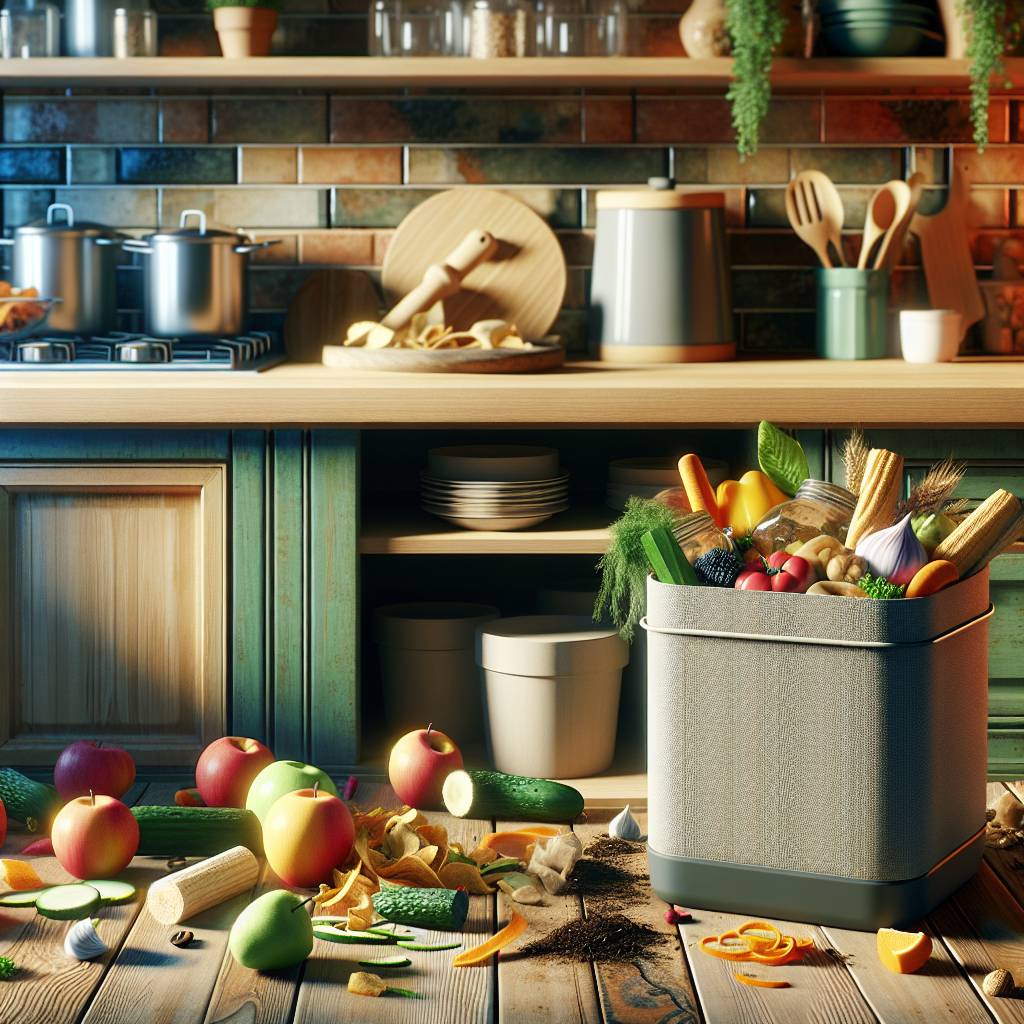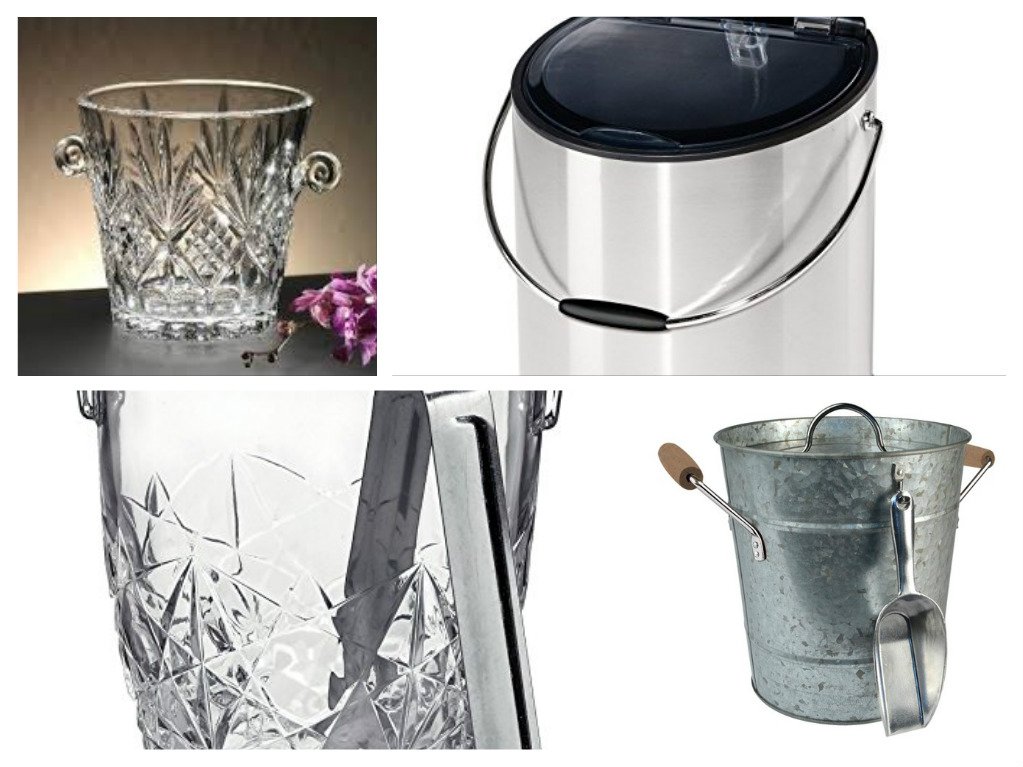Composting is not only eco-friendly but also a rewarding practice that reduces landfill waste while creating a sustainable cycle in your own home.
Composting has been around for centuries, with ancient civilizations using natural decay processes to enrich their agricultural lands. Today, it remains an essential part of environmental conservation efforts. By implementing these simple yet impactful strategies and using pro tips, you can contribute to reducing greenhouse gas emissions and minimizing your carbon footprint. Let’s unlock the secrets of successful composting for kitchen waste together!
Key Takeaways
- Start composting by understanding the basics, such as the right balance of green and brown materials, and the importance of aeration and moisture.
- Set up your composting system by choosing the right location, container, and adding a layer of soil to introduce beneficial microorganisms.
- Compost kitchen waste like fruit and vegetable scraps, coffee grounds, and eggshells, while avoiding meat, dairy, and oily foods.
- Master the art of layering in composting by alternating between green and brown materials to maintain a healthy decomposition process.
- Manage your compost pile by turning it regularly, monitoring moisture levels, and adjusting carbon-to-nitrogen ratios when necessary.
- Troubleshoot common composting issues like bad odors, pests, or slow decomposition by adjusting the moisture content or adding more brown materials.
Understanding Composting Basics
Composting Process
Composting is the natural process of recycling organic matter, such as kitchen waste, into a valuable soil amendment. During composting, microorganisms break down the materials through decomposition. This breakdown occurs in stages, starting with bacteria and fungi breaking down food scraps, followed by larger organisms like earthworms and insects that consume tougher materials.
The success of the composting process relies on food scraps and these microorganisms to decompose the organic matter effectively. To ensure this happens efficiently, it’s crucial to provide them with an ideal environment. This includes layering different types of materials like green (nitrogen-rich) and brown (carbon-rich) waste to maintain a proper carbon-to-nitrogen ratio. Turning the compost pile regularly helps aerate it and distribute moisture evenly for optimal decomposition.
Benefits of Home Composting
Home composting offers numerous benefits both for individuals and the environment at large. By diverting kitchen waste from landfills, home composters significantly reduce methane emissions that would have been produced during anaerobic decomposition in landfills. Instead, they create nutrient-rich soil amendments that enrich garden soils without harmful chemicals or additives.
Moreover, home composting provides a cost-effective solution for cultivating healthy gardens while reducing dependence on store-bought fertilizers. The nutrient-dense composition of homemade compost contributes to improved soil structure by enhancing its ability to retain water and vital nutrients essential for plant growth.
Nutrients in Compost
Nitrogen plays a key role in promoting leafy growth; phosphorus supports root development; potassium aids overall plant health; calcium strengthens cell walls; magnesium assists chlorophyll production; sulfur is essential for enzyme formation; iron helps with photosynthesis; zinc promotes enzyme activity.
In addition to these primary nutrients, micronutrients present in compost—such as boron, copper, manganese—are equally important for plants’ overall health but required only in trace amounts compared to macronutrients.
Setting Up Your Composting System
Compost Bin Selection
There are a few options to consider. Tumblers, for instance, provide the advantage of easy turning and faster decomposition. On the other hand, traditional bins or piles offer simplicity and cost-effectiveness. When choosing between these options, think about your available space and convenience. Consider if you have enough room for a large tumbler or if a simple pile would be more suitable.
Ventilation and drainage features are also crucial when selecting a compost bin. Proper ventilation allows oxygen to reach the microorganisms responsible for breaking down organic matter, while good drainage prevents waterlogging that can lead to unpleasant odors.
For example:
- Tumblers work well in smaller spaces where odor control is essential.
- Traditional bins or piles are ideal for larger yards with ample space for composting activities.
Indoor Composting Solutions
Indoor composting solutions cater to individuals who want to manage kitchen waste on a small scale without access to outdoor space. Utilizing worm bins is an effective way to compost kitchen scraps indoors. These specialized containers house worms that consume organic waste and produce nutrient-rich castings as they digest it.
Managing odor and moisture indoors is critical when composting within your home environment. To prevent foul smells from developing, balance wet food scraps with dry materials like shredded paper or cardboard in your worm bin.
Another indoor solution involves incorporating Bokashi fermentation systems into your routine. This method relies on fermenting food waste with beneficial microbes before burying it in soil outdoors or adding it to an outdoor composter.
For instance:
- Worm bins are perfect for apartment dwellers who want to recycle their kitchen scraps.
- Bokashi fermentation systems suit those looking for an efficient way to break down food waste inside their homes without producing strong odors.
Backyard Techniques
Incorporating backyard techniques into your composting practices involves utilizing yard waste such as leaves, grass clippings, and small branches in addition to kitchen scraps. Balancing carbon-rich (or “brown”) materials like dried leaves with nitrogen-rich (or “green”) materials such as fruit peels ensures optimal conditions for decomposition.
What to Compost from Your Kitchen
Ideal Food Waste
It’s crucial to identify suitable scraps. Opt for fruit and vegetable peels, coffee grounds, tea bags, and shredded newspaper. Avoid including meat, dairy products, and oily foods in your compost as they can attract pests and create unpleasant odors.
Incorporating fruit and vegetable peels is an effective way to reduce kitchen waste. Banana peels, citrus rinds, carrot tops, and potato skins are all excellent choices for composting. These items break down quickly and provide essential nutrients for your compost pile.
Effective Ingredients Utilize coffee grounds from your daily brew by adding them to your compost bin. Coffee grounds are rich in nitrogen which helps speed up the decomposition process of organic matter. Similarly, used tea bags can be added directly into the compost pile as they also contribute valuable nutrients.
Adding crushed eggshells not only reduces waste but also enriches the soil with calcium—a vital nutrient for plant growth. Ensure that the eggshells are thoroughly crushed before mixing them into the compost to expedite their decomposition process.
Consider incorporating shredded newspaper into your compost as a valuable source of carbon. The paper breaks down slowly compared to food scraps or yard waste while providing essential carbon needed for a healthy balance within the compost pile.
The Art of Layering in Composting
Balancing Greens and Browns
Composting is all about achieving the perfect balance between greens and browns. Greens, such as fruit and vegetable scraps, provide nitrogen, while browns like dried leaves or newspaper offer carbon. It’s essential to maintain the right ratio of nitrogen to carbon for effective decomposition. For optimal results, aim for a mix of roughly 2-3 parts brown materials to 1 part green.
Understanding the role of these materials is crucial. Greens are quick to decompose but can become slimy if overused. On the other hand, browns add structure and airflow to the compost pile while preventing it from becoming too compacted or smelly.
To achieve this balance, consider layering your kitchen waste with dry materials like shredded paper or straw. This helps prevent odors by absorbing excess moisture from food scraps.
Maximizing Food Scraps
Repurposing food waste creatively is key. Instead of throwing away coffee grounds, use them in your garden as they’re rich in nitrogen – a valuable component for composting success.
When preparing meals, set aside vegetable peels, eggshells, and coffee filters; these items make excellent additions to your compost bin rather than ending up in landfills where they contribute to harmful greenhouse gas emissions.
Consider strategies such as vermicomposting (using worms) or Bokashi fermentation for diverting even more kitchen waste from landfills. These methods allow you to compost items that typically wouldn’t break down easily in a traditional pile—such as meat scraps and dairy products—by accelerating their decomposition process through microbial activity.
Managing Your Compost Pile
Proper Maintenance
Turning the compost pile is crucial for optimal decomposition. This process helps aerate and mix the materials, allowing oxygen to reach all parts of the pile. By turning it regularly, you prevent compacting and create an environment where beneficial microorganisms can thrive.
Monitoring moisture levels in your compost pile is essential. The ideal moisture content should resemble a damp sponge – not too dry or soggy. Excess water can lead to a smelly, anaerobic environment, while insufficient moisture may slow down decomposition.
Troubleshooting common issues in your compost pile involves identifying and addressing any challenges that arise during the process. For instance, foul odors could indicate excessive moisture or inadequate aeration. By making adjustments like adding browns (dry materials) for balance or using an aerating tool, you can rectify these problems effectively.
Aeration and Moisture Control
Adequate aeration plays a vital role in the composting process by ensuring that beneficial bacteria have enough oxygen to break down organic matter efficiently. Without proper airflow, your kitchen waste might not decompose as quickly as desired.
Managing moisture levels is equally important. Too much moisture can result in unpleasant odors and attract pests like flies and rodents. On the other hand, if your compost is too dry, decomposition will be sluggish.
Using specific tools such as pitchforks or aerating rods facilitates effective decomposition by promoting airflow throughout the pile without disrupting its layers excessively.
Troubleshooting Common Composting Issues
Rodent and Pest Management
The key lies in the design of your bin. Make sure it’s tightly sealed and elevated off the ground. This prevents pests from burrowing into the pile. Avoid adding meat, dairy, or oily foods that can attract unwanted critters.
Managing fruit flies and other pests in your compost is crucial for maintaining a healthy environment. To do this, ensure that you bury fresh food scraps under several inches of existing compost material. This will prevent pests from being attracted to the surface.
Natural deterrents for unwanted critters include using strong-smelling herbs like mint or lavender around your compost area to keep rodents at bay. You can also consider adding crushed eggshells as they are sharp and uncomfortable for pests to walk on.
Odor Control
Addressing foul odors with proper management is essential for an effective composting process. One way to achieve this is by ensuring a good balance between green (nitrogen-rich) and brown (carbon-rich) materials in your pile.
Using cover materials such as straw or shredded newspaper helps minimize smells by creating a barrier between the decomposing waste and the surrounding air. This reduces odor while still allowing airflow necessary for decomposition.
Incorporating citrus peels into your compost can serve as a natural deodorizer due to their pleasant aroma. Citrus contains oils that help mask any unpleasant smells emanating from the bin.
Seasonal Composting Tips
Winter Composting Strategies
During the winter months, it’s essential to take extra steps to ensure that your composting process continues smoothly. Insulating your compost bin is crucial in cold weather to maintain the decomposition process. You can achieve this by wrapping the bin with insulating materials such as bubble wrap or old blankets. This helps retain heat and keeps the microorganisms active despite the low temperatures.
Adjusting the carbon-to-nitrogen ratio in your compost pile during winter is important. Since organic materials decompose more slowly in colder temperatures, adding more nitrogen-rich materials such as kitchen scraps can help speed up the process. For example, you can add coffee grounds, vegetable peels, and fruit scraps to increase the nitrogen content and promote decomposition.
Utilizing indoor composting methods during winter months is a pro tip for maintaining a sustainable approach year-round. Indoor composting options like vermicomposting (using worms) or Bokashi composting (fermentation) are effective ways to continue managing kitchen waste when outdoor conditions are not favorable for traditional composting methods.
Vermicomposting with Kitchen Waste
Vermicomposting Guide
Vermicomposting is a fantastic way to turn kitchen waste into nutrient-rich compost for your garden. To set up a worm bin for vermicomposting, you’ll need a container with air holes, bedding material like shredded newspaper or cardboard, and red worms. Place the bedding in the bin and add the worms. Then, start adding your kitchen scraps such as fruit and vegetable peels, coffee grounds, and eggshells.
The key to managing worm population and reproduction is to provide them with the right conditions. Keep the bedding moist but not soggy, maintain proper ventilation in the bin, and ensure that it’s not too hot or cold where you keep the worms. As they consume organic matter, they will multiply naturally. If their population becomes too high for the bin to support, consider splitting them into multiple bins or giving some away to other gardeners.
Harvesting vermicompost involves separating the worms from their castings (the compost they produce). You can do this by creating separate piles of fresh food on one side of your worm bin while leaving finished compost on another side; eventually, most of the worms will migrate towards new food sources. Alternatively, you can dump out all contents onto a tarp under bright light – since worms are sensitive to light; they will burrow down while you scrape off layers of castings until only worms remain.
Enhancing Your Compost Quality
Boosting Nutrient Content
To enhance your compost quality, consider adding extra organic matter such as grass clippings, vegetable scraps, or coffee grounds. These materials provide essential nutrients to the compost and improve its overall quality. Incorporating biochar or rock dust into the compost mix can enrich it with vital minerals. For example, adding powdered eggshells can increase the calcium content in the compost.
Another way to boost nutrient content is by using comfrey leaves. These leaves are rich in nutrients and help accelerate the breakdown of other organic matter in the compost pile. Their high nitrogen and mineral content makes them an excellent addition to enhance the nutrient profile of your kitchen waste composting.
Adding these additional organic materials not only improves nutrient levels but also helps create a more balanced and nutritious environment for microbial activity within the compost pile. This results in richer, higher-quality compost that will benefit your garden plants.
Accelerating Decomposition
One way to ensure rapid decomposition of kitchen waste is by introducing activators such as manure or comfrey tea into your composting process. Activators speed up microbial activity, leading to faster breakdown of materials.
Shredding or chopping kitchen waste before adding it to the compost bin can also accelerate decomposition significantly. Smaller particles have a larger surface area for microbes to work on, speeding up their breakdown process considerably.
Utilizing hot composting techniques is another effective method for accelerating decomposition. Hot composting involves creating optimal conditions for microbial activity by maintaining proper moisture levels and turning the pile regularly to introduce oxygen—aeration promotes fast decomposition.
Sustainable Kitchen Waste Management
Reducing Waste Footprint
There are several ways it contributes to reducing your waste footprint. By minimizing overall household waste through composting, you divert a significant amount of organic matter from landfills. This not only reduces the volume of trash but also decreases harmful methane emissions. By recycling organic matter into nutrient-rich compost, you contribute to environmental sustainability by enriching soil health and promoting plant growth without relying on chemical fertilizers.
Home composting also plays a crucial role in reducing reliance on chemical fertilizers. By creating your own compost from kitchen scraps and yard waste, you eliminate the need for synthetic additives that can harm the environment and water sources. Instead, you harness natural processes to produce an eco-friendly alternative that nourishes your plants while minimizing pollution risks.
Closing the Loop in Your Kitchen
Completing the cycle of sustainable kitchen waste management involves using homemade compost in gardening activities. When you integrate homegrown produce into meals prepared with care and attention, it promotes circular economy principles through efficient resource utilization within your household ecosystem. The nutrients derived from food scraps and other organic materials return back to nature as part of this closed-loop system.
Moreover, embracing sustainable practices by integrating homegrown produce into meals not only reduces reliance on store-bought items but also encourages mindful consumption habits. It fosters a deeper connection with food sources while imparting a sense of appreciation for nature’s cycles and seasons.
Closing Thoughts
You’ve now mastered the art of composting kitchen waste like a pro. From understanding the basics to troubleshooting common issues, you’re equipped with the knowledge to create rich, nutrient-dense compost for your garden. Remember, composting is not only about reducing waste but also about giving back to the environment. So, roll up your sleeves, get your hands dirty, and start composting your kitchen waste today. Your garden (and the planet) will thank you for it!
Now that you’re armed with these composting tips, it’s time to put them into action. Start small and gradually incorporate these practices into your routine. The impact may seem modest at first, but every effort counts in creating a more sustainable future. Happy composting!
Frequently Asked Questions
How do I get started with composting in my kitchen?
To start composting in your kitchen, you’ll need a small bin or container for collecting food scraps, such as fruit and vegetable peels. Then, find a suitable outdoor location for your compost pile or consider using a worm bin if space is limited.
What should I avoid putting into my kitchen compost?
Avoid adding meat, dairy products, oils, and fats to your kitchen compost. These items can attract pests and create unpleasant odors. It’s best to stick to plant-based materials like fruit and vegetable scraps, coffee grounds, and eggshells.
Can I add paper products to my kitchen compost?
Yes! Paper towels, napkins, shredded newspaper, and cardboard can all be added to your kitchen compost. Just make sure they are free from any chemicals or contaminants that could harm the beneficial microbes responsible for breaking down the organic matter.
How often should I turn or aerate my kitchen compost pile?
For optimal decomposition of organic material in your kitchen compost pile, aim to turn or aerate it every 1-2 weeks. This helps introduce oxygen into the mix and prevents anaerobic conditions that can lead to foul odors.
Is it possible to use worms for processing my kitchen waste at home?
Absolutely! Vermicomposting is an excellent way to process kitchen waste using worms’ help. A dedicated worm bin filled with bedding material provides an ideal environment for red wigglers or other earthworm species to break down food scraps efficiently.






